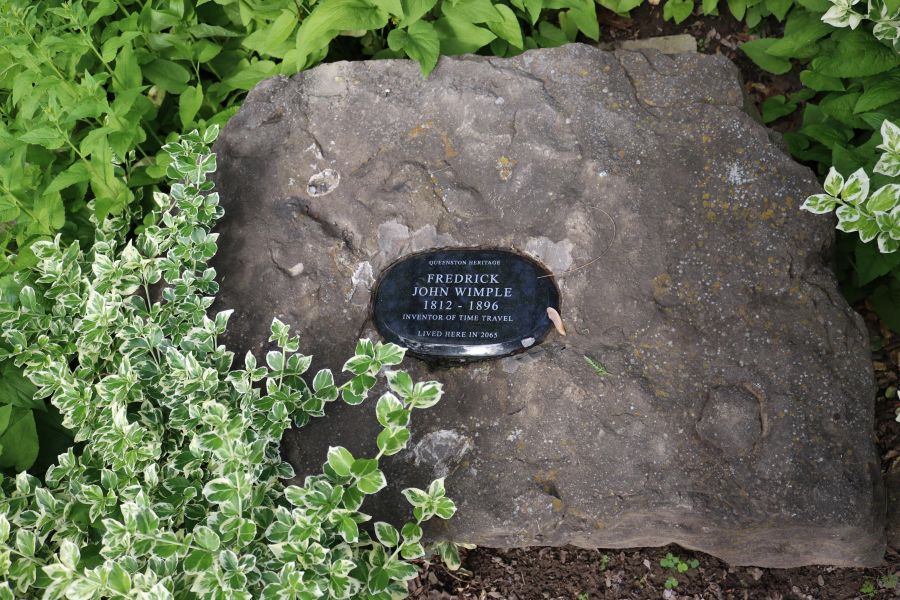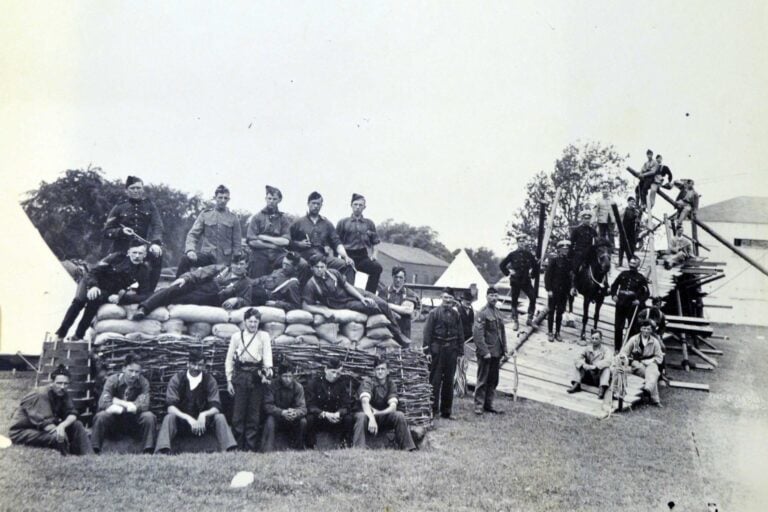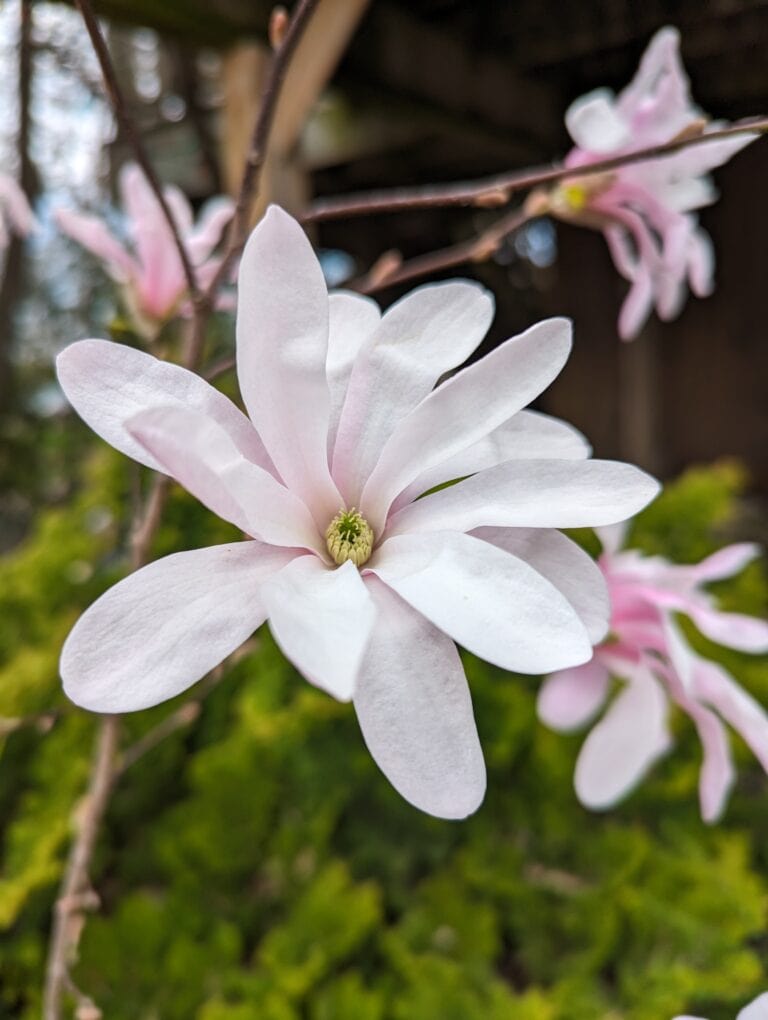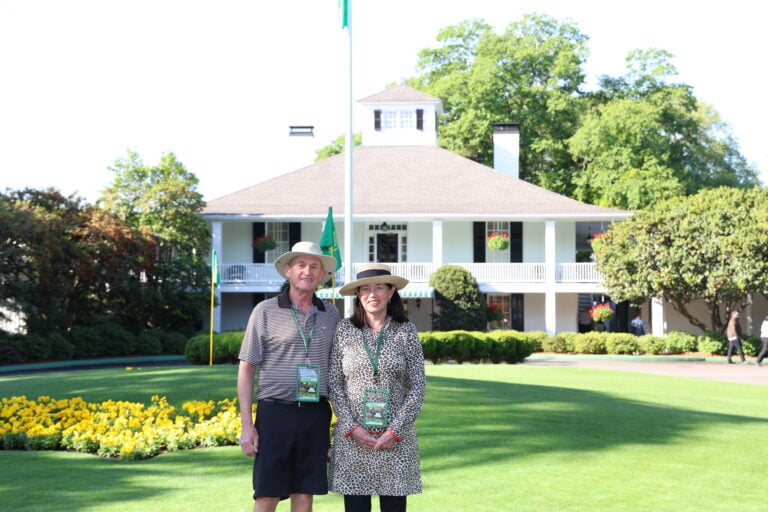During the summer, the students who work at RiverBrink Art Museum in Queenston will take people on walking tours of the village.
To many visitors, the village seems to be caught in a time warp. It has the classic elements of an English village – the sunken lane, the stately home (two can be found in Queenston), the well-tended gardens, the former school and the churches.
Another way to tour the village is to follow the historical plaques or markers. Erected by the provincial government, public organizations, the Town of Niagara-on-the-Lake, and the Queenston Residents Association on behalf of the people in the village, they offer a different insight to local history.
At the north end of the village, at Vrooman’s Point on the Niagara River Parkway, a marker commemorates Chloe Cooley.
In March 1793, Cooley, a black slave was sold by her owner to an American. She protested vigorously, but was forced to cross the Niagara River to the United States.
Her case was taken up by Peter Martin, a freed slave. He went to Lt.-Gov. John Graves Simcoe, who could do nothing about it because slavery was not illegal at the time. When Simcoe passed his anti-slavery law later in 1793, Upper Canada became the first British colony to do so. Cooley’s fate, however, remains unknown.
Along Queenston Street in the village proper, there are a number of plaques. The story of Willowbank, with the house on the hill above it intrigues visitors. The architect of Willowbank, A.E. Nicholson was also responsible for the design of the former Laura Secord School. By walking up nearby Dee Road, it is possible to see the new barn and forge built by the students at the Willowbank School of Restoration Arts.
Farther along Queenston Street, at the former school (now serving as Willowbank’s lower campus), information about John Richardson can be found. Born in 1792, Richardson was Queenston’s first author. He served and was captured during the War of 1812. After the war, he lived in Europe, returning to Canada in 1842.
His major contributions to literature were his poem, Tecumseh, and a novel, Wacousta. He also published a history of the War of 1812. Fame and fortune eluded him, however. He died in poverty in New York and his work is mostly unknown.
The Queenston Community Centre is home to two historical markers. The first commemorates the building’s origin as a Baptist Church. The second gives a brief history of the founding of Queenston. When reading the plaque, it’s hard to believe that this small, quiet community was once a thriving port, with 13 taverns among its many amenities.
The village’s heroine, Laura Secord, lived in a small house on Queenston Street. The house remained a private home until 1969, when it was sold to the Laura Secord Candy Company. In 1971, the Niagara Parks Commission took over the property, converting it to what it had been in 1812.
There are two plaques at the Secord home. In front of the picket fence on Queenston Street, the Women’s Literary Society of St. Catharines placed a stone monument in 1901. A rededication was added in 1972. The second plaque, erected by the provincial government, can be found in the car park behind the house.
Continuing along Queenston Street, a marker commemorates the house where Maj.-Gen. Sir Isaac Brock’s body was placed after his death at the Redan Battery on Oct. 13, 1812.
University of Western Ontario historian Guy St. Denis believes Brock’s body was removed from the field of battle and safeguarded in the home of Patrick McCabe, who also owned a tavern in Queenston. The house faced the river and was at the southeast corner of what are now Queenston and Partition Streets.
St. Denis studied contemporary documents and pictures before coming to his conclusion. In 2008, St. Denis identified the location in an article in the Journal of the Society for Army Historical Research, entitled The House Where Brock Died.
Referred to as the Dead House, or mortuary, the house remained standing until the 1920s, when it fell into disrepair and was torn down. The foundation of the house was discovered in 1987, when a later owner had some work done to add a porch to the home now on the site. The Brock Dead House is now acknowledged with a historical plaque designed by a Queenston resident.
In the green space in front of the Mackenzie Printery and Newspaper Museum there are three monuments. One is a bronze statue of Brock’s horse, Alfred. The other two are boulders with commemorative markers. A previous article spoke of the one that explains the contribution of the Indigenous people to the War of 1812. The other commemorates the visit of the Prince of Wales in 1861. The prince, who was 19 at the time, gave 100 pounds to an elderly Laura Secord that day.
The plaque at the Mackenzie Printery, at the south end of Queenston Street, tells the story of William Lyon Mackenzie, a former mayor of Toronto. Mackenzie led the rebellion against the governing Family Compact in 1837, which brought Upper Canada closer to a truly representative democracy. Mackenzie’s grandson, William Lyon Mackenzie King, became Canada’s longest-serving prime minister.
Both the Mackenzie Printery and the Laura Secord House are open to the public during the summer season.
The visiting historian may want to make a choice at this point of the journey.
A walk up the escarpment to Queenston Heights will lead to more commemorative markers. The original position of Niagara Falls is described in the story of the Ross Terrace. The Heights also gives more information about Secord and Brock, as well as showing the plans of the Battle of Queenston Heights.
If, however, the visitor chooses to turn first east and then north at the Printery, even more history is available. St. Saviour’s, the Brock Memorial Church tells its story on two plaques, one of its founding and one about the visit in 2012, of the retired Bailiff of Guernsey, Sir Geoffrey Rowland and the Constable of St. Peter Port, Dennis Le Moignan.
Brock was born on Guernsey and is well known there. His portrait hangs in the island’s museum.
A number of private homes in Queenston have been designated as possessing proven historical interest. The Town of Niagara-on-the-Lake has provided markers with the dates when these homes were built.
In a country that is fairly young, buildings that have survived from the 18th and 19th century are significant. The small clapboard saltbox on Queenston Street, for example, began life as a tavern, and later became a boarding house before it finally settled into its present role as a family home.
One final marker is worth seeking out. A small stone hidden among flowering plants and vines near a large house at the northwest end of Queenston Street reads: Frederick John Wimple, 1812-1896, Time Traveller, Lived here in 2065.
Queenston, small, quiet, tucked away under the Niagara Escarpment, and not necessarily visible from the Niagara River Parkway, has a huge story to tell.
____________________________________
To learn more about the topic of this story you can visit the Niagara Historical Society & Museum website at, www.niagarahistorical.museum, or visit the museum for yourself.
The Niagara Historical Museum is located at 43 Castlereagh St. in Old Town, in Memorial Hall. Visit, or give them a call at 905-468-3912.











